Best AR Pistol Brace + Buyers Guide [2025]
With the latest news in the legal battle against the ATF and their attempt to ban pistol braces, MANY Americans are now racing to purchase pistol braces.
Why? Well, it’s because the ATF Ban on Pistol Braces has been blocked!
This means that if you’ve been thinking about buying a pistol brace, NOW IS THE TIME before the ATF fights back and tries again.
As Gun University, we pride ourselves on giving non-biased gun reviews and gun info – that’s because we’re a collection of true gun experts, who take ZERO advertising dollars, and we are also firearms industry experts (and attorneys) who can give you the real scoop on what’s going on.
We’ve gathered the best pistol braces, with a focus on those designed for AR pistols, to help you find the right one.

How I Chose the Best AR Pistol Brace
As a former Marine with decades of shooting experience, I’ve tested countless AR pistol braces to find the best options. I combined my personal favorites with recommendations from industry experts to create this list of the top seven pistol braces.
Each pick is ranked with different needs in mind, so there’s something here for everyone. To make sure you can choose the right brace, I’ve also included a buyer’s guide to help you know what to look for.
These recommendations come from my own experience and expert advice. While my rankings reflect what works for me, the final choice is yours.
Now that you know how I chose the best AR pistol braces, let’s dive into the list.
Best AR-15 Pistol Brace
1. SBA3 | 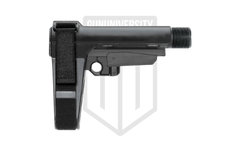 |
| See Price |
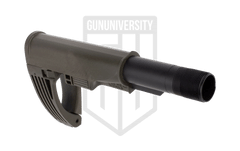 |
| See Price | |
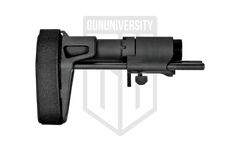 |
| See Price | |
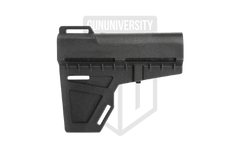 |
| See Price | |
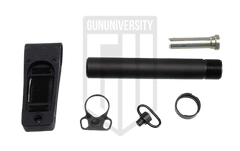 |
| See Price | |
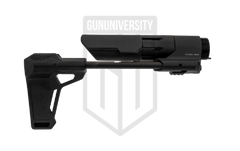 |
| See Price | |
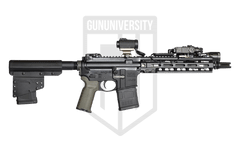 |
| Check Price |
Best AR Pistol Braces
- SBA3
- Gear Head Works Tailhook Mod 2
- SB Tactical PDW
- KAK Shockwave Blade 2M
- Doublestar Corp Strongarm Pistol Brace
- Strike Industries PDW Stabilizer
- Pistol Storage Devices
Best AR Pistol Brace Specifications
Below is a list of our Best AR-15 Pistol Brace. Here we can compare and line up the specs from each of the products and help you make the best decision possible.
| Pistol Brace | Positions | Weight | Length |
|---|---|---|---|
| SBA3 | 5 position adjustable | 6.75 ounces | 9.5 inches |
| Gear Head Works Tailhook Mod 2 | 5 position adjustable | 7 ounces | 12.95 inches |
| SB Tactical PDW | 3 Position Adjustable | 18.14 ounces | 6.75 inches |
| KAK Shockwave Blade 2M | 12 Adjustable Positions | 4 ounces | 7.25 inches |
| Doublestar Corp Strongarm Pistol Brace | 1 Non-Adjustable | 4.8 Ounces | 1.9 inches |
| Strike Industries PDW Stabilizer | 2 Adjustable Positions | 19 ounces | 5.5 inches |
| Pistol Storage Devices | User Adjustable | 6 punches | NA |
Best AR Pistol Brace – Reviews
Now we’ve had an overview look at our list, so we’ll take the time to review each item. In this section we’ll be revisiting our specs, speaking about the product, and looking at the pros and cons.
SBA3 Specs
- Positions 5 position adjustable
- Weight 6.75 ounces
- Length 9.5 inches
SBA3 Review
SB Tactical never slowed down in its creation of various brace designs. The SBA3 was a huge leap forward in the brace market, and SB Tactical once again revolutionized the brace world. The SBA3 offers adjustability and improved compatibility and stability with stock AR 15 parts. Additionally, we got a sleek design and improved appearance.
I’ve run the SBA3 on a few of my AR builds, and I’ve got to say—it’s my go-to brace. The adjustability is a game-changer, offering five positions that make it easy to get the right fit. Since it uses a standard AR 15 carbine tube, it locks in place securely and doesn’t rotate or torque. That’s a huge improvement over older designs like the SB15, which tended to loosen up after a while.
The combination of rigid and soft polymer makes the SBA3 comfortable while staying durable. I also love the ambidextrous QD slot for a sling—it’s incredibly handy for quick adjustments. Plus, it just looks good. Compared to the bulky SB15, the SBA3’s slim profile is sleek and modern.
The only downside I’ve noticed is the small lever for adjustments—it can be accidentally hit, though it’s rare. Overall, the SBA3 is my favorite brace, and it’s never let me down.
SBA3 Pros and Cons
- Hybrid Design for increased Comfort
- Optional QD Slots
- Adjustable Design
- Priced Affordably
- Unprotected adjustment lever
SBA3 Deals
Tailhook Mod 2 Specs
- Positions 5 position adjustable
- Weight 7 ounces
- Length 12.95 inches
Gear Head Works Tailhook Mod 2 Review
Gearhead Works might not produce a wide variety of braces, but they do produce some of the best on the market. This upstart started with the original Tailhook, which was a very simple modular design that could fit a variety of weapons. Over time the DesignDesign evolved and became the AR 15-centric Tailhook Mod 2.
I’ve personally used the Tailhook Mod 2, and what Gear Head Works did here was impressive. The design is strong, rigid, and built entirely from hard polymer, which immediately stood out to me. It doesn’t brace in the traditional sense either. Instead, it offers an innovative approach where you slip your forearm through it, providing a natural counterbalance to the forward weight of heavier AR pistols. I’d argue it’s one of the most effective braces out there, especially for larger setups.
Gear Head Works didn’t just settle for off-the-shelf parts—they designed a proprietary tube with five adjustable positions. That attention to detail really sold me. Sure, it’s missing modern QD slots and is priced above $200, but the rugged design and performance make it worth it for me. If you’re looking for a sturdy brace for your heavy AR, this one delivers.
Tailhook Mod 2 Pros and Cons
- Protected adjustment button
- Rigid DesignDesign works well for heavy ARs
- Proprietary Tube
- Expensive
Tailhook Mod 2 Deals
SB Tactical PDW Specs
- Positions 3 Position Adjustable
- Weight 18.14 ounces
- Length 6.75 inches
SB Tactical PDW Review
The SB Tactical PDW brace does things differently, and I love it. If you have an ultra-compact AR 15, then the SB Tactical PDW is for you. Maybe it’s a .300 Blackout or a 9mm, but if it’s small, you don’t want a huge brace sticking off the back. SB Tactical worked with Maxim Defense to produce an effective and modern PDW brace option. It’s well made, easy to use, and has a design perfectly compatible with a PDW.
What stands out to me is how short and minimalist it is. The SB Tactical PDW brace keeps things compact and practical. With three adjustable positions, all you have to do is pull it into place. I like how solid it feels when it locks, and hitting the lever to collapse it is quick and easy.
I’ve used it on my .22LR AR pistol with a short barrel, and it fits perfectly. The combo of rigid metal and soft rubberized material offers a great balance of comfort and durability. The QD point at the 6 o’clock position is a nice touch for sling compatibility. And honestly, the cyberpunk aesthetic really appeals to me.
The only downside? The price. But for a well-made, minimalist PDW brace, I think it’s worth it.
SB Tactical PDW Pros and Cons
- Short Design
- Rapid Deployment
- QD Compatible
- Expensive
SB Tactical PDW Deals
KAK Shockwave Blade 2M Specs
- Positions 12 Adjustable Positions
- Weight 4 ounces
- Length 7.25 inches
KAK Shockwave Blade 2M Review
Shortly after the SB15 premiered, the gates opened, and we got our first blade-style stabilizer from a company called KAK. The KAK Shockwave Blade offered an adjustable stabilizer, and the Shockwave Blade 2M improves on that design. This minimalist take on the pistol stabilizer is an adjustable design ready to be used in various roles with almost any AR 15 you have. Plus, it won’t break the bank.
I’ve found the adjustability of the original Shockwave is still present in the Blade 2M, but it features a much more robust design. The mil-spec AR 15 tube provides solid locking points for the stabilizer, allowing for five different positions. This customization ensures I can find the perfect fit with the Blade 2M.
The thin design, as the name implies, fits snugly against the forearm, providing excellent stabilization. Weighing in at just four ounces, it’s perfect for keeping my lightweight AR 15 pistol agile.
However, I do wish the single ambidextrous sling point was a QD point instead of webbing. The adjustment tab is a bit small and requires a firm press to adjust, so it won’t adjust easily on the fly, but it won’t accidentally shift during use either.
Overall, the Shockwave Blade 2M checks all the boxes for a minimalist design—thin, ultralight, and perfectly suited for my lightweight AR 15 pistol. While it may not be a traditional brace, it certainly does the job well.
KAK Shockwave Blade 2M Pros and Cons
- Super Lightweight
- Locked Down Adjustability
- Sling Compatible
- Doesn’t play well with heavy AR15s
KAK Shockwave Blade 2M Deals
Strongarm Pistol Brace Specs
- Positions 1 Non-Adjustable
- Weight 4.8 Ounces
- Length 1.9 inches
Doublestar Corp Strongarm Pistol Brace Review
Minimalism is as minimalism does. The Doublestar Corp Strongarm Pistol Brace gives you a tiny little brace design that fits onto the end of your traditional AR 15 pistol buffer tube. It’s super small but still packs a ton of features in its teeny tiny size. The little fella does a ton of work for such a little brace. The Strongarm Pistol Brace gives you a high-quality, minimalist option full of features.
I appreciate the construction of the Strongarm. When you name something the Strongarm, it better be built tough, and Doublestar Corp delivered by machining it from billet aluminum. This rugged design ensures it won’t bend, break, or wear out anytime soon.
Instead of forcing your arm through metal, the Strongarm features comfy elastic band straps that wrap around your arm, making it both different and effective. Two strong clamp screws secure the brace to the tube, preventing any movement during shooting. The ambidextrous QD slot at the bottom is perfect for sling use without interfering with bracing.
The only downside is that this minimalist setup doesn’t work well with heavier guns, especially front-heavy configurations. If you want the Strongarm, keep your lights and optics small.
Strongarm Pistol Brace Pros and Cons
- Made to Last
- QD Sling Slots
- Low Profile Design
- Doesn’t Play Well With Heavy AR 15s
Strongarm Pistol Brace Deals
Strike Industries PDW Stabilizer Specs
- Positions 2 Adjustable Positions
- Weight 19 ounces
- Length 5.5 inches
Strike Industries PDW Stabilizer Review
Strike Industries has done a few different pistol braces, but the PDW Stabilizer blows their others out of the water. As you’d imagine, it’s a minimalist design made for those ultra-modern and ultra-short PDW-style AR-15 pistols. This is the shortest AR brace and buffer tube I can find that uses a standard AR-15 BCG. It’s a mere 5.5 inches when fully collapsed. Strike used a combination of metal and polymer to make a rugged and durable design on top of its awesome functionality.
From my experience, the PDW Stabilizer feels like a complete system right out of the box. You get the stabilizer, tube, buffer assembly, flat spring wire, and even the castle nut. The fact that Strike Industries managed to shave off three inches from the standard buffer tube without sacrificing compatibility with a standard BCG is impressive. And trust me, when you’re working with a short PDW setup, every inch counts.
The deployment mechanism is another standout. With just a press of a button, the stabilizer springs outward—super fast and great for quick transitions. I’ve also appreciated the QD sling points and cheek rest for different aiming options.
The only downside is compatibility. It doesn’t play nice with extended takedown pins or all 9mm setups unless you grab the secondary buffer from Strike.
Strike Industries PDW Stabilizer Pros and Cons
- Quick Deploy Capability
- All In One Package
- QD Sling Points
- Compatibility issues with platforms and accessories.
Strike Industries PDW Stabilizer Deals
Pistol Storage Devices Specs
- Positions User Adjustable
- Weight 6 punches
- Length NA
Pistol Storage Devices Review
I always like to include a wildcard option on my lists, something a little different than most options on the list. I might be cheating with my wildcard here. It’s not a brace. It’s actually an ammo storage option that takes up that slot at the end of your AR 15’s pistol buffer tube. You can store an extra mag or even two depending on caliber. The PSD, as it’s called, is customizable and could be used as a stabilizing brace if necessary.
What I really appreciate about the PSD is its modular design, which lets me customize how it works and what I can fit inside. I’ve stored a 5.56 magazine, dual 9mm Glock magazines, and even a tourniquet. Their website showcases a huge gallery of configurations, which gives me plenty of ideas for maximizing storage.
The device’s anti-rotation setup ensures the PSD stays put, allowing me to reach for my spare magazine with confidence. Plus, it can double as a stabilizing brace, though it’s not primarily designed for that.
While I can manually adjust it with set screws, it doesn’t feature the press-and-release button of traditional braces. It fits most pistol buffer tubes ranging from 1.18 inches to 1.25 inches. Weighing in at just 6 ounces, the modern Dupont Zytel polymer makes it lightweight yet tough. Its biggest downside? Well, it’s not a brace on a list of the best braces, but it’s still an awesome addition if you’re looking for something a little different.
Pistol Storage Devices Pros and Cons
- Easy to Install
- User Configurable
- Locks Down Tight
- Not a Brace
Pistol Storage Devices Deals
Best AR Pistol Brace – Buyer’s Guide
There is more to a brace than you think. After reading through some of the best braces, you might have noticed just how diverse they can be. With that in mind, let’s dive into what to consider before shopping for a brace.
Back in 2013, SIG Sauer partnered with SB Tactical to create the SB-15, the first stabilizing brace designed for the AR 15. The idea came from Alex Bosco, who wanted to help his disabled friend maintain control while shooting. After a Range Safety Officer asked his friend to stop firing, Bosco saw a need for a solution. The early prototypes were pretty rough, made from foam and plastic, but they got the job done.
Once the ATF approved the concept, SIG stepped in, and the brace market exploded. These braces help make heavy pistols easier to handle, boosting both control and safety. While the SB-15 was a simple start, the evolution of pistol braces has been incredible.
Today, we’ll explore the best AR 15 braces and what you should look for when choosing one. To jump straight to our list, you’ll find the Best AR15 Pistol Braces here.
What’s a Pistol Brace?
If you are new to the world of AR 15s, then the idea of an AR 15 pistol already sounds silly, much less the idea of a pistol brace. Due to the legal definition of a pistol, any weapon with a barrel shorter than 16 inches that are not smoothbore and not equipped with a stock is considered a pistol. Thus, AR 15s can be pistols. They are typically referred to as large format pistols.
A brace attaches to the buffer tube of an AR 15 pistol. The idea is that the brace interacts with your forearm in a way to provide greater stability. This makes the big, heavy, and somewhat unwieldy weapons much easier to control. There are dozens of different designs meant to provide different types of ARs and different types of shooters with a multitude of options.
The Legality of Pistol Braces
Pistol braces have always been legal, at least as of this writing. I’m not a lawyer, and this is in no way legal advice. It’s just a bit of history in regard to the ATF and the pistol braces. While the AR 15 pistol brace has always been legal, the way it’s been used has been up for some debate. At first, the ATF said it was fine if you misused the device and shouldered it.
Then they said, wait, no, don’t do that. It makes the weapon a short-barreled rifle.
Later, they flip-flopped again, saying it was permissible as long as the brace was genuinely intended as a brace. However, they’ve never been entirely clear about how intent is determined. One point the ATF has emphasized is that modifying a brace to function more like a stock—thus potentially making it one of the short-barreled rifles—crosses a legal line. This means no adding plugs, removing Velcro straps, or any other modifications that reduce its functionality as a brace while enhancing its resemblance to a shoulder stock.
In early 2022 the ATF released a proposed rule for remarks to the public. That proposed rule would set parameters for when the brace would become a stock and make an unregistered SBR. They have not published the rule officially, so as of this writing, we do not have clear rules on using pistol braces.
Rumor and conflicting information were common throughout 2022, but by the end of the year (after mid-terms), it was clear the ATF would be issuing restrictions. Supposedly, the agency will be issuing its “final word” in January, but as with everything we get from the ATF, there’s no way to predict if that’s the case or the specific result.
The rule that was finally published by the ATF didn’t match their proposed rule (another example of the ATF breaking the law and inventing things out of whole cloth) and multiple legal challenges were filed and the ATF has lost each time.
Brace vs. Stabilizer
The brace is essentially the universal term we’ve decided to apply to anything that attaches to the rear of an AR pistol that provides more control. Within the term, brace sits the traditional brace we learned to love from SB Tactical, but also another type called stabilizers or blades. They are two unique designs that aim to do the same thing in different ways.
A brace will wrap around your arm and typically be secured with a strap. A brace provides active retention of the gun to your body. It often envelopes the arm and provides the most stability. These devices work well on all AR 15 pistols, from the small and light to big and heavy. They can be soft, rigid, or a combination of the two.
A Stabilizer or blade is often a lighter, thinner, more minimalist design. They touch your forearm and often act as more of a counterbalance to the gun. These are much lighter and thinner and better suited for lighter AR pistols. They can be a little uncomfortable with heavy recoil.
Fixed or Adjustable
The first braces we ever saw were fixed and used friction to keep them in place. Installing an SB15 on a pistol tube was an affair that had many of us cursing up a storm. These days you can pick between adjustable and fixed to get it just right for you.
The main benefit of an adjustable brace is that it’s not a one-size-fits-all affair. You can customize the fit to your forearm to get it just right. You can also shrink the entire gun by completely collapsing the stock to make it a bit more compact for storage purposes. The adjustable brace might require a new buffer tube to accommodate it. These can be standard carbine tubes or proprietary designs. They tend to be more modern but also more expensive.
A fixed brace offers no adjustment. They typically are a friction fit design on a standard pistol tube. Some designs may work with a specialized tube to prevent the brace from twisting. Other fixed braces use a friction fit with the benefit of a set screw or set screws to keep it 100% stable. These braces offer a simple design that’s often affordable and easy to install and use.
Material Selection
Braces come made from all manner of materials. These are various polymers, but we won’t dive into those polymers too deep. What we will talk about is the nature of those polymers. Braces come in soft, rigid, and hybrid designs, and each has its own advantages.
Soft braces like the original SB15 tend to prioritize comfort and fit around the arm more than most. These won’t rub you or grind at your arm as you shoot. They are malleable and absorb recoil. They also provide a little less support than rigid designs in favor of more comfort.
Rigid braces are made from hard polymers or even metals. These are unbendable and absorb weight well when used as a brace. The rigid design helps provide more balance and support at the cost of comfort.
Hybrid designs strike a balance, providing a mix of comfort and support without maximizing either. They’re a versatile, all-around option that appeals to many shooters looking for something in between.
Braced Up
The AR 15 pistol brace absolutely changed the game. It’s helped jumpstart the large format pistol market. At this point, not having a braced pistol seems weird if you’re a AR 15 fan. Sadly the ATF seems to be on the edge of constantly regulating pistol braces, so with that in mind, make sure you contact your representatives and tell them to say no to ATF overreach.
With my daily ATF bash out of the way, I want to turn it over to the audience. What’s your favorite AR 15 brace? Let us know below!
Best AR Pistol Brace – FAQs
Are AR pistol braces legal?
Yes, as of now, AR pistol braces are legal in the U.S., but recent legal challenges and proposed regulations from the ATF have created uncertainty. It’s important to stay updated on the laws in your state and federal regulations regarding their use.
Can I use a pistol brace on any AR pistol?
Most AR pistol braces are designed to fit standard AR pistol buffer tubes. However, compatibility can vary based on the specific design of your pistol and the brace itself. Always check manufacturer specifications to ensure a proper fit.
Do I need a specific lower receiver for an AR pistol brace?
No, you can use an AR pistol brace on any standard AR lower receiver designed for pistols. Just ensure that the buffer tube is compatible with the brace you choose.
Can I use a longer barrel length with an AR pistol brace?
Yes, you can use longer barrel lengths with an AR pistol brace, but keep in mind that if the overall length exceeds 26 inches, it may be classified as an SBR if the brace is used like a shoulder stock.
Can I switch between an arm brace and shoulder stocks?
Switching between an arm brace and shoulder stocks is not recommended on the same firearm, as it may change the classification of your firearm under ATF regulations. Always check local laws and guidelines.
Recent Posts
December 15, 2025
December 15, 2025
December 12, 2025
December 12, 2025

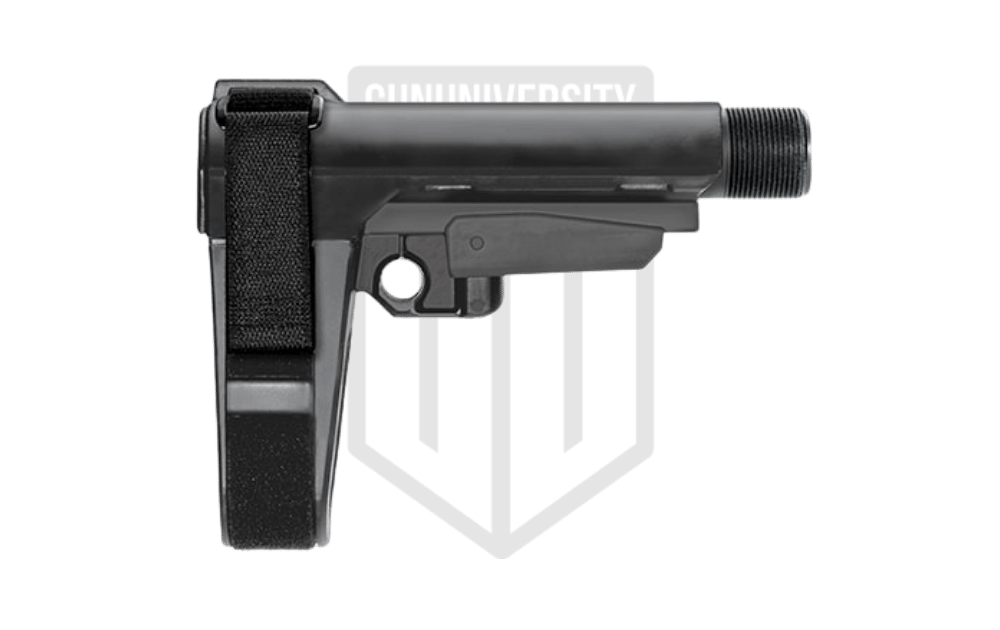
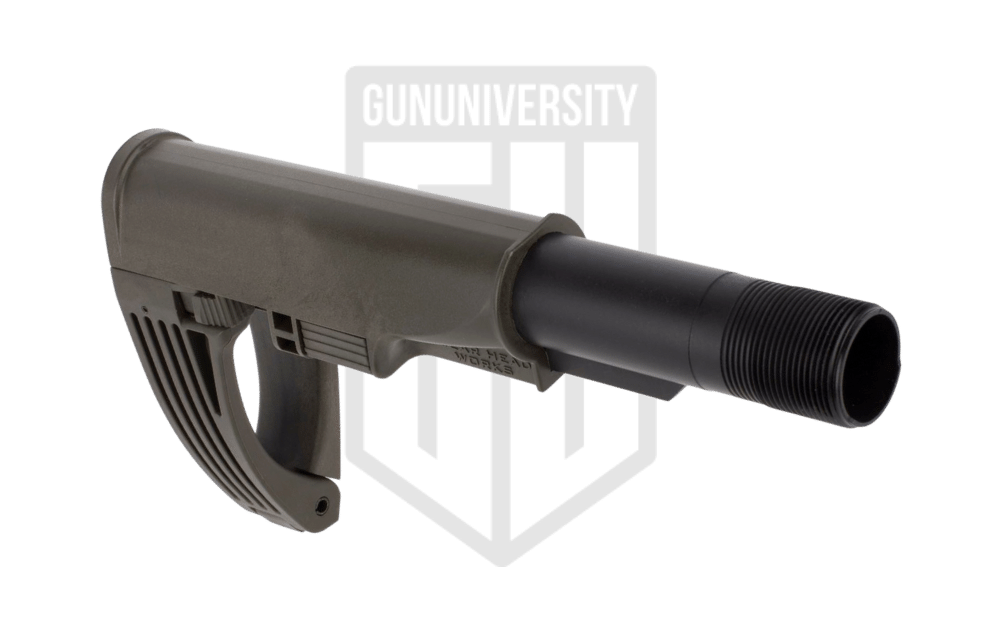
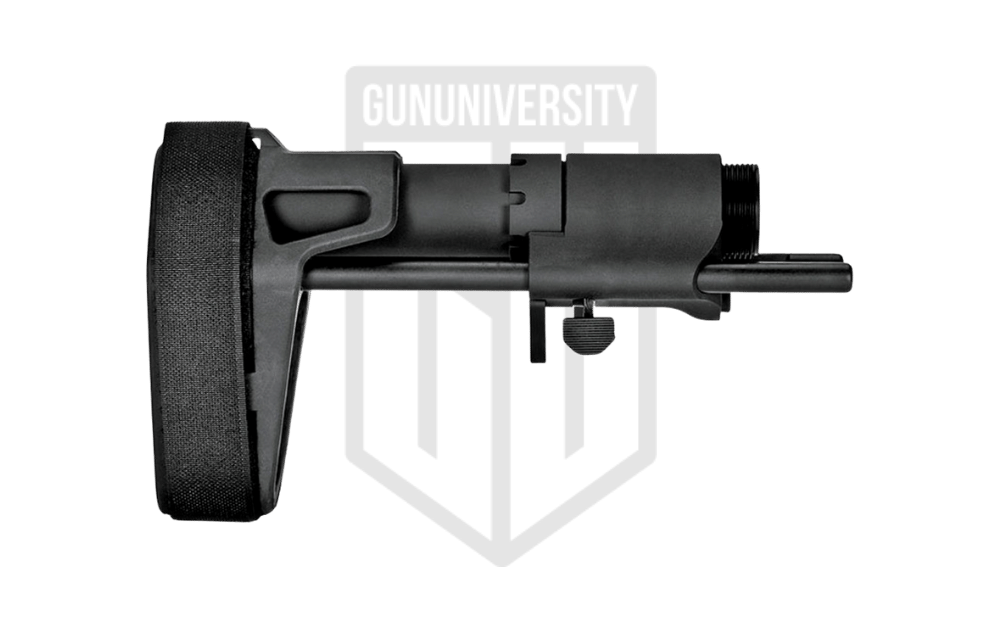

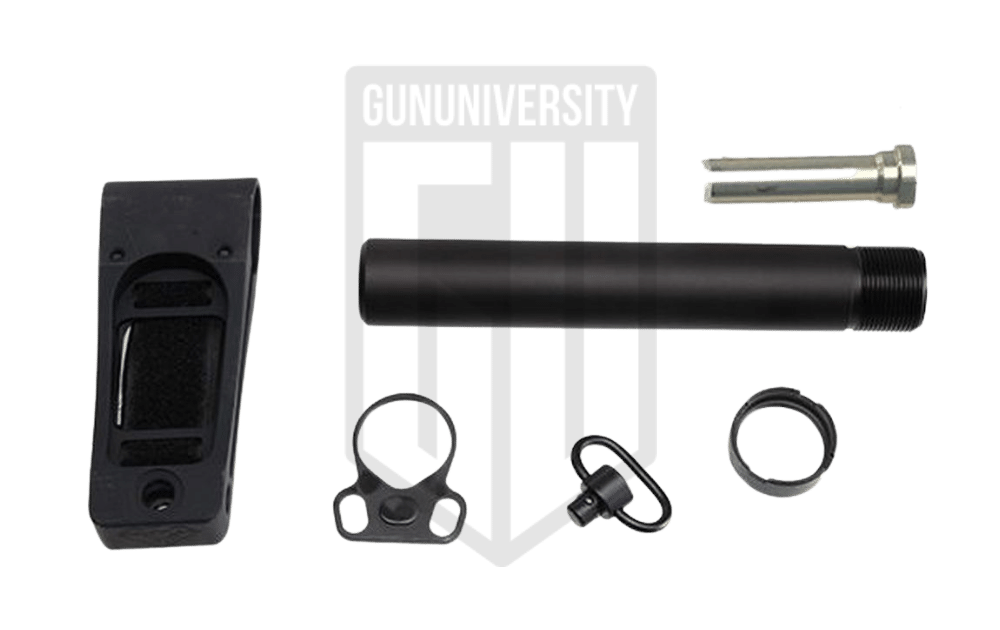
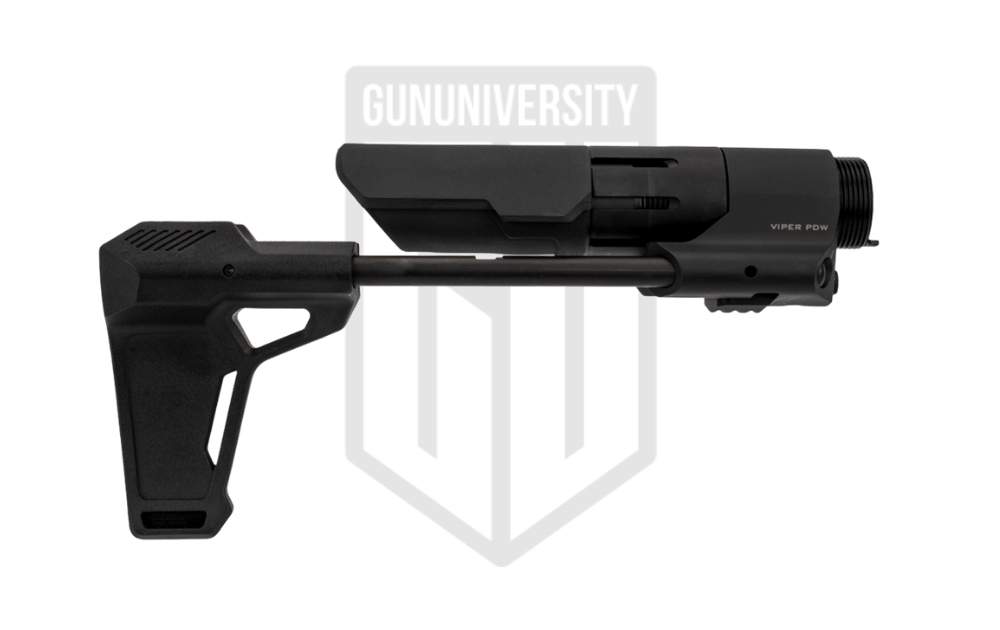
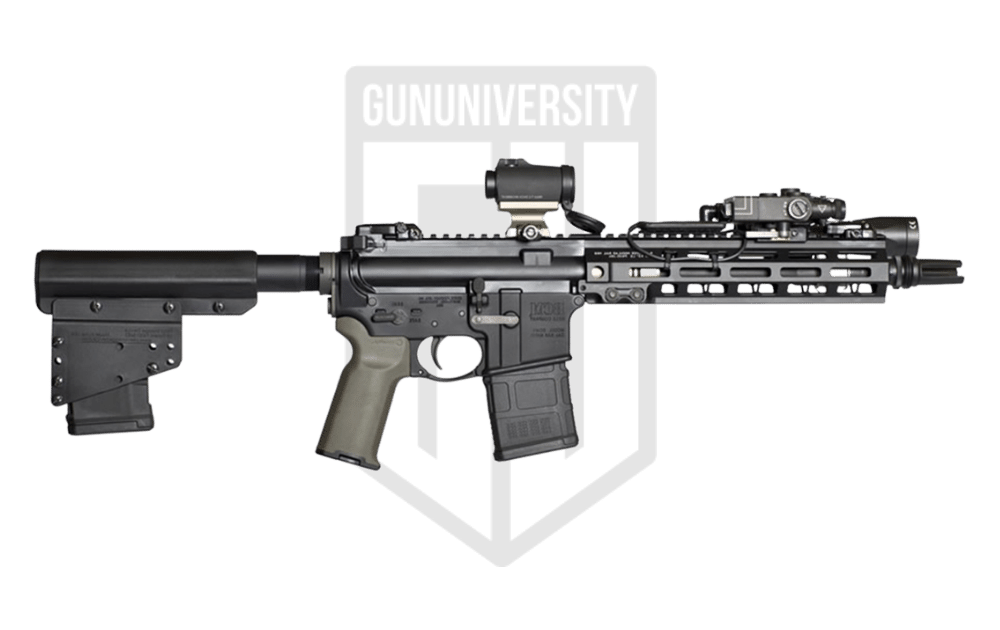
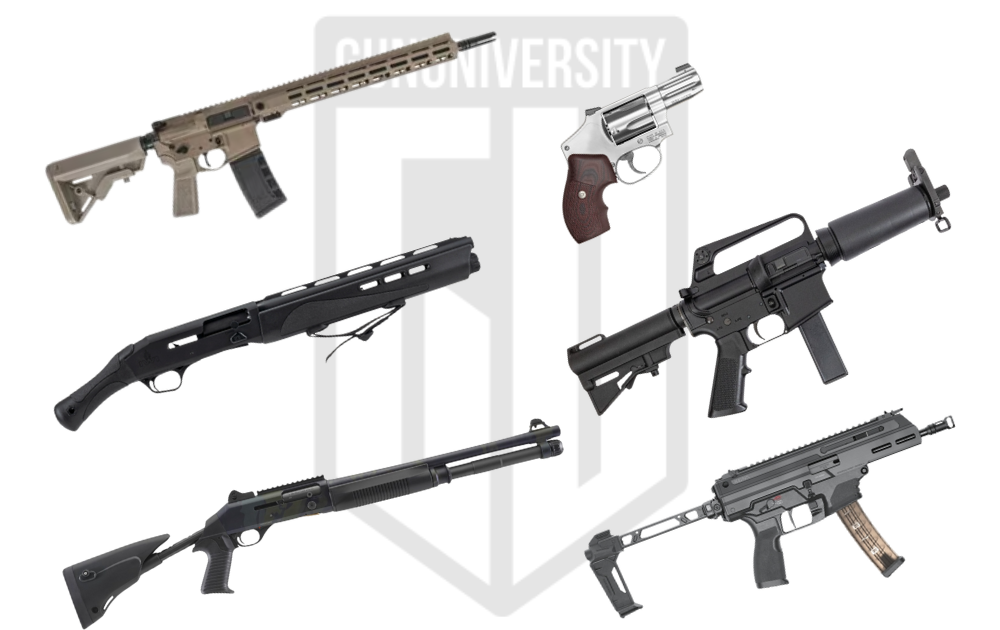
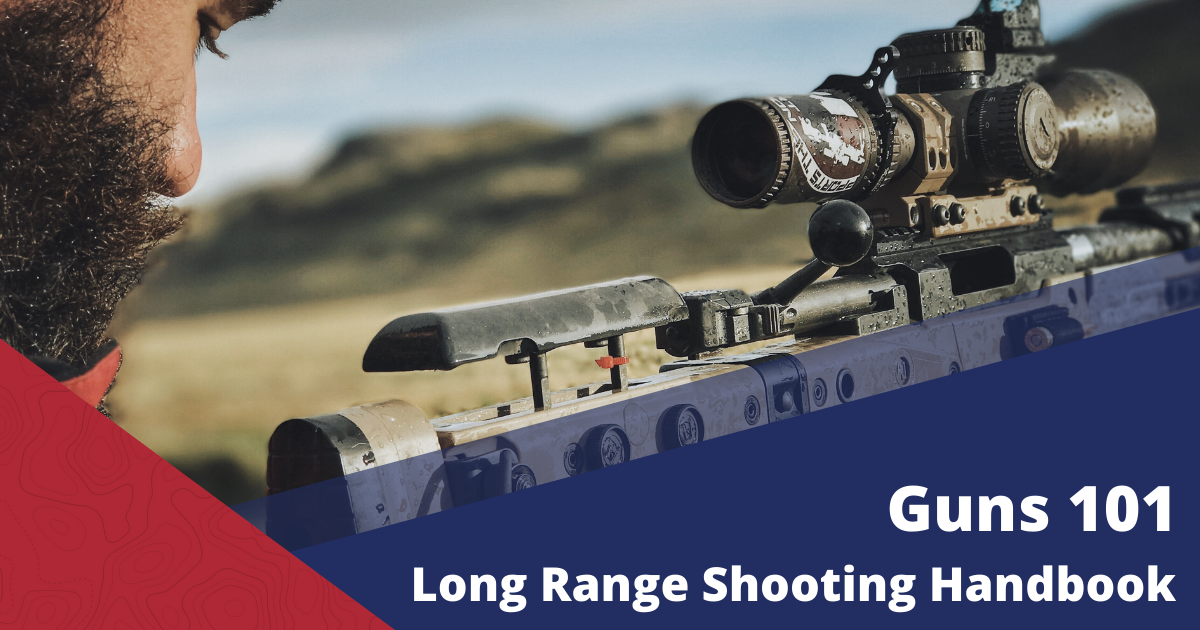
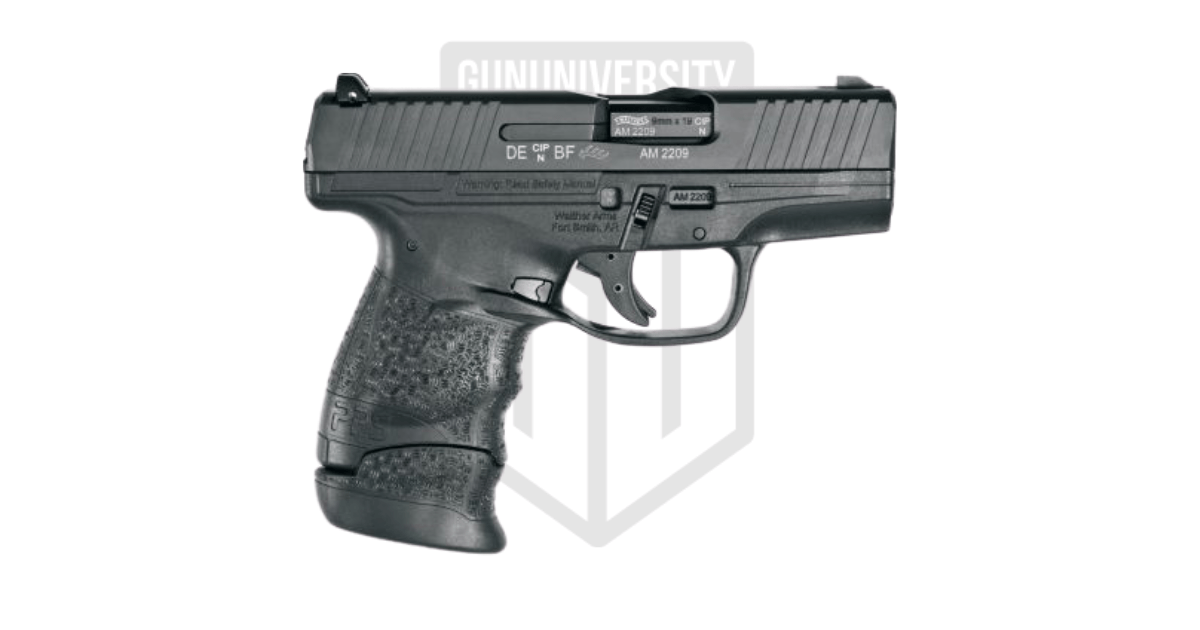
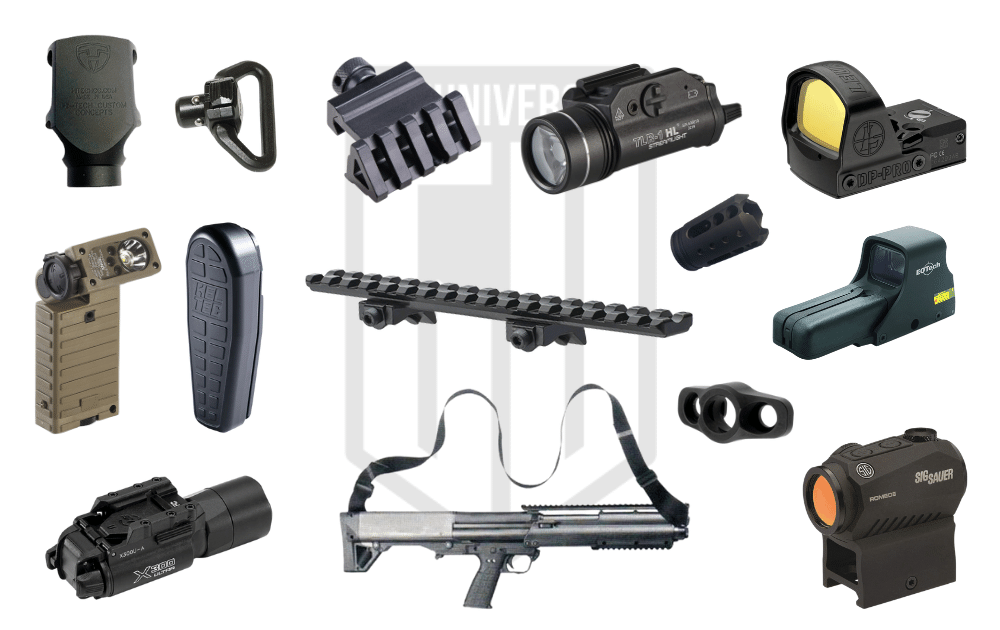
I thought your article on ar-15 pistol braces was very informative. Probably the most clearly written review on stocks vs. stabilizers. Thanks and Semper Fi.